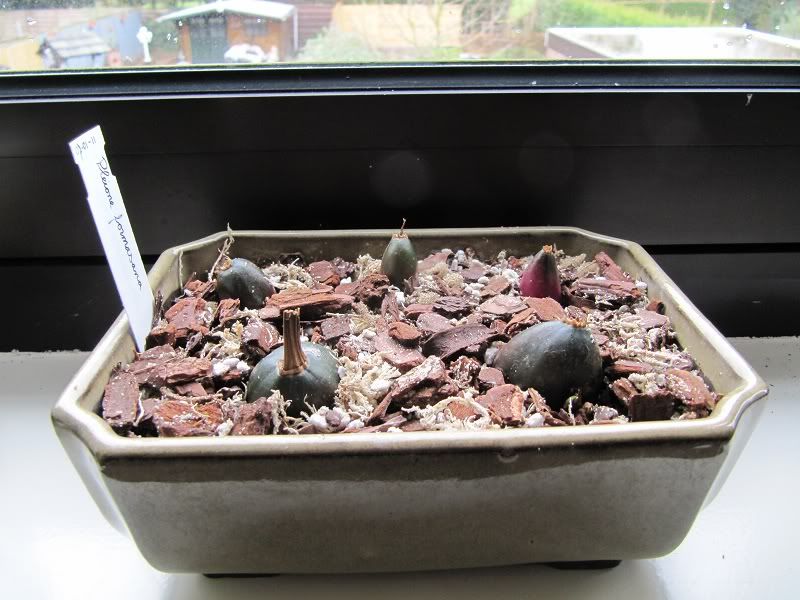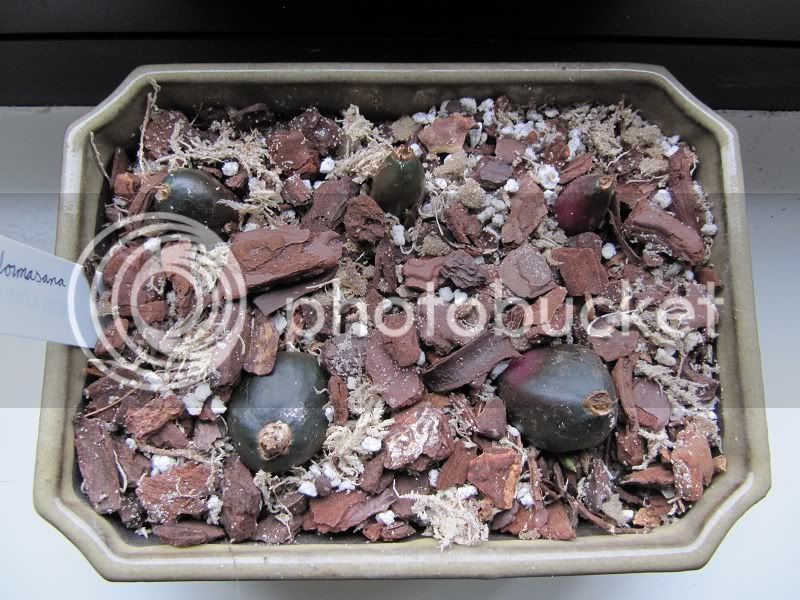M
Marc
Guest
As allready stated in Hakone's topic I'm going to give the genus a Pleione a go in this and hopefully the coming years.
I'm starting of with five bulbs of Pleione formosana. I received two big bulbs which have 2 new leads each and then there are three smaller bulbs that have a single lead per bulb.
I've potted these in a Bonsai dish / pot.
For preparation I started of with cleaning the bulbs I got. I started of with removing all the earth, small critters and other stuff that originated from their original growing area. The roots were all trimmed back to 2-3 cm's.
I used two small pieces of a terracotta pot to cover the drainage holes of the Bonsai pot. Then I added a thin layer of broken lava stone for extra drainage. The substrate itself consist of bark, perlite, chopped spagnum and a bit of river sand.
I started of with a layer of substrate in the pot, a bit more then half of the heigth of the pot was filled this way. Then I placed the bulbs in the pot taking care there is enough room around them to facilitate growth of new bulbs later on in the season. The room between the bulbs was filled with the rest of the substrate untill the bulbs were more or less covered for 50-60%.
I'm looking forward to seeing them bloom in the coming months.
Here is the result:


I'm starting of with five bulbs of Pleione formosana. I received two big bulbs which have 2 new leads each and then there are three smaller bulbs that have a single lead per bulb.
I've potted these in a Bonsai dish / pot.
For preparation I started of with cleaning the bulbs I got. I started of with removing all the earth, small critters and other stuff that originated from their original growing area. The roots were all trimmed back to 2-3 cm's.
I used two small pieces of a terracotta pot to cover the drainage holes of the Bonsai pot. Then I added a thin layer of broken lava stone for extra drainage. The substrate itself consist of bark, perlite, chopped spagnum and a bit of river sand.
I started of with a layer of substrate in the pot, a bit more then half of the heigth of the pot was filled this way. Then I placed the bulbs in the pot taking care there is enough room around them to facilitate growth of new bulbs later on in the season. The room between the bulbs was filled with the rest of the substrate untill the bulbs were more or less covered for 50-60%.
I'm looking forward to seeing them bloom in the coming months.
Here is the result:





